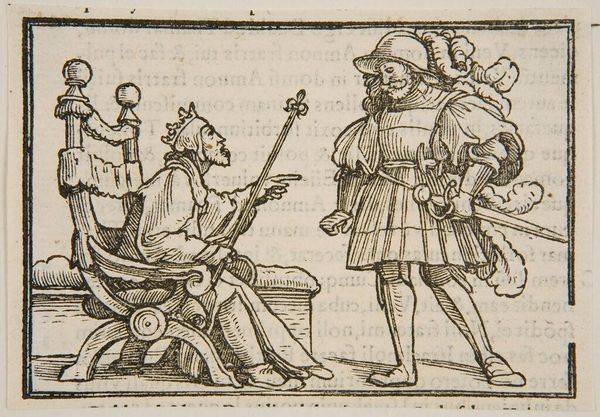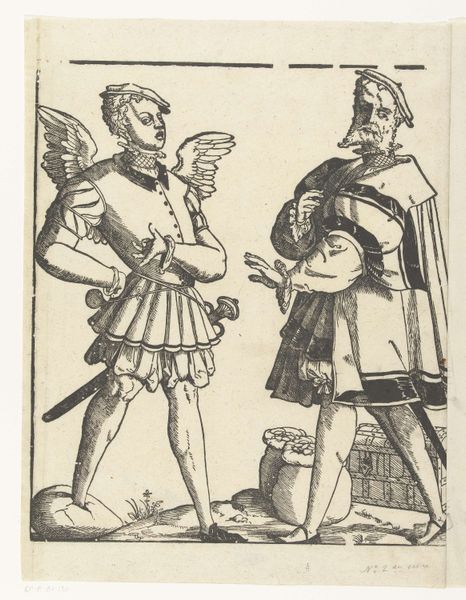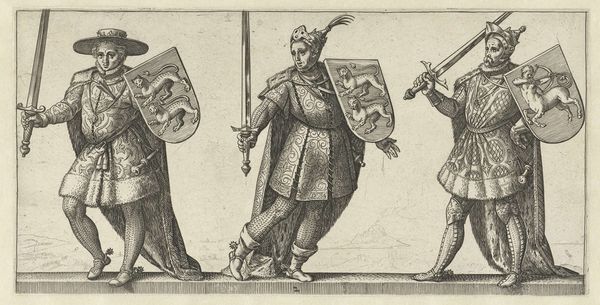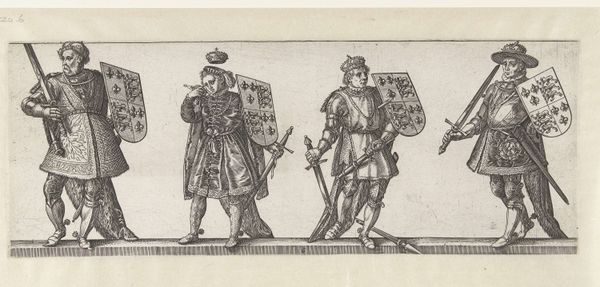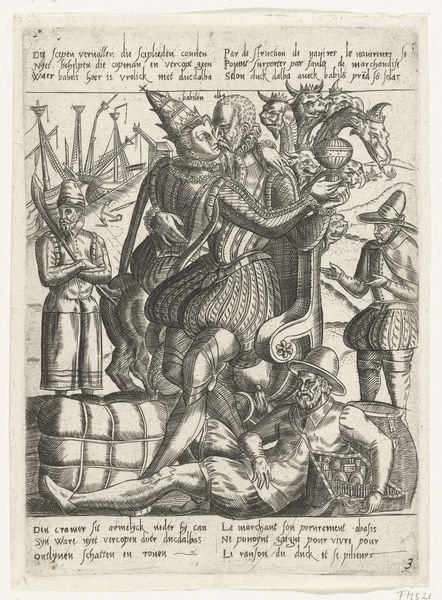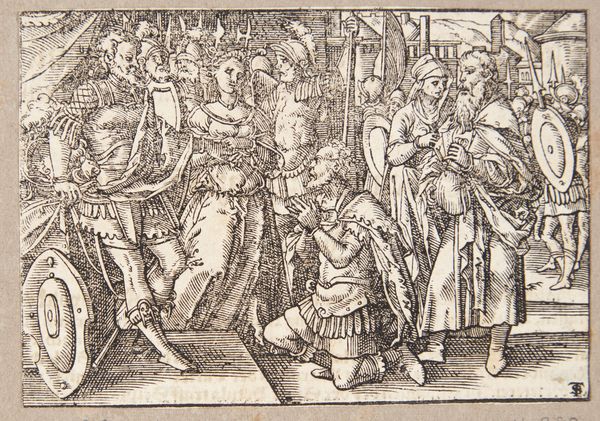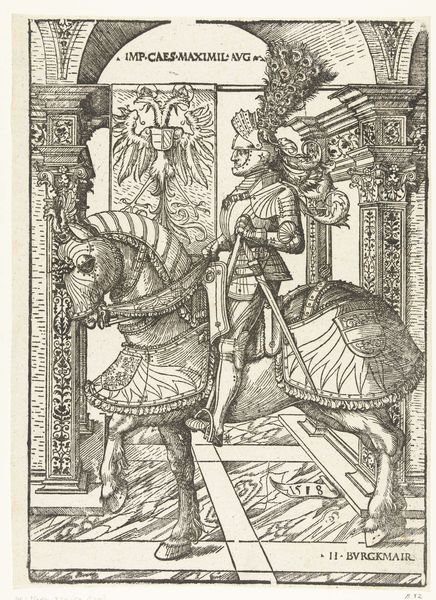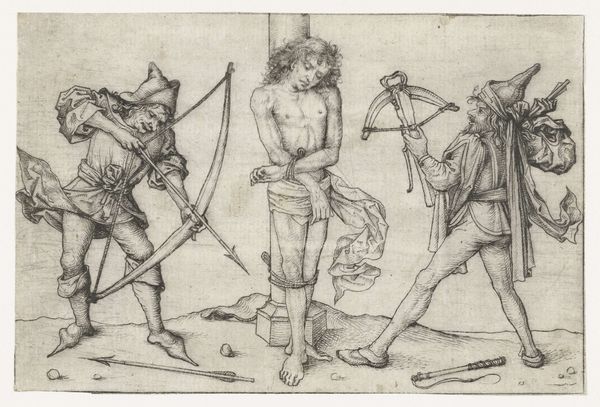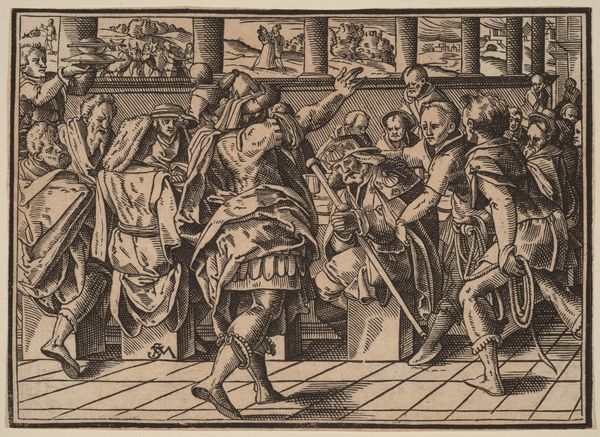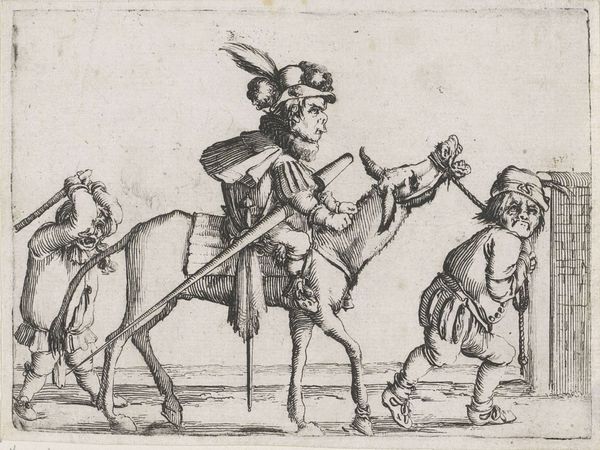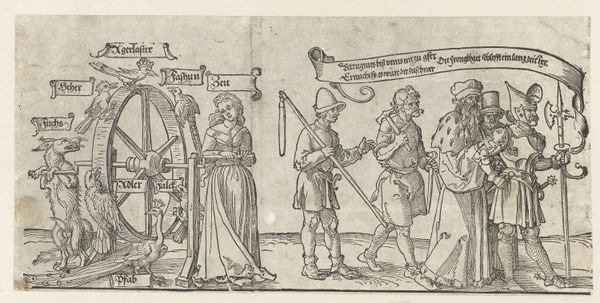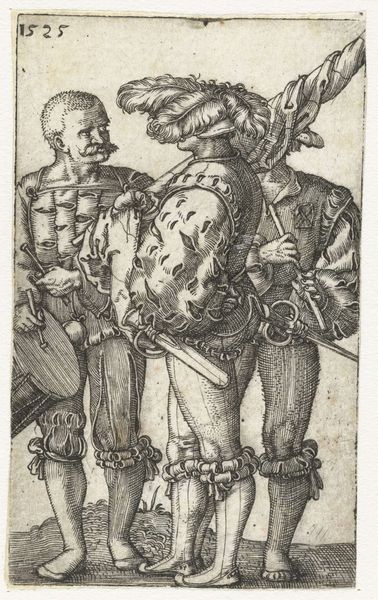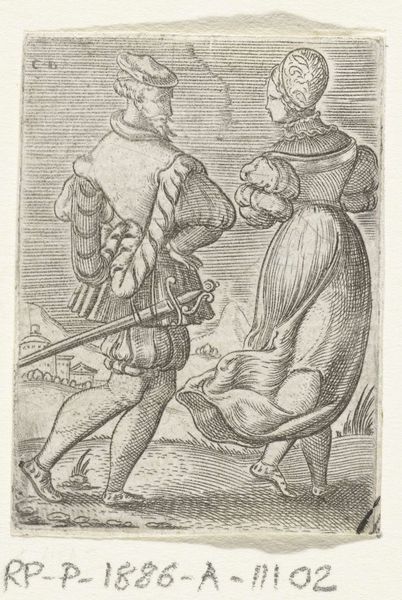
drawing, print, engraving
#
drawing
#
comic strip sketch
#
imaginative character sketch
# print
#
cartoon sketch
#
figuration
#
personal sketchbook
#
idea generation sketch
#
sketchwork
#
pen-ink sketch
#
sketchbook drawing
#
history-painting
#
storyboard and sketchbook work
#
northern-renaissance
#
sketchbook art
#
engraving
Dimensions: height 60 mm, width 85 mm, height 83 mm, width 98 mm
Copyright: Rijks Museum: Open Domain
This is Hans Holbein the Younger’s woodcut, depicting King David sending Uriah to his death, an illustration filled with signs of power, deceit, and the burdens of leadership. Consider David, enthroned, sceptre in hand, pointing, a gesture laden with command, but also moral ambiguity. This pointed finger appears throughout history; consider, for example, the commanding presence of figures across time, from Roman emperors to Renaissance monarchs, each directing the course of history—or, perhaps, justifying their own actions. Such gestures are etched into our collective memory, triggering responses that transcend time. Holbein masterfully captures this moment, stirring something deep within our subconscious. David’s gesture reflects a crisis of conscience, a powerful demonstration of the psychological weight of wielding authority, forever binding the viewer to grapple with the complexities of morality. The image of the pointing figure is one we continue to see across time, from propaganda posters to modern advertisements. It reminds us that symbols and gestures do not exist in isolation; instead, they perpetually resurface, echoing through the corridors of time, reshaping our perceptions and emotions.
Comments
No comments
Be the first to comment and join the conversation on the ultimate creative platform.
